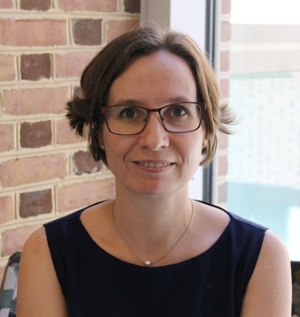‘Here Comes the Sun’: Tack Faculty Lecture to explore the science of building a star on Earth
 People have always looked to the stars with a sense of curiosity and wonder. That spirit of exploration has fueled remarkable achievements, from the space race to the discovery of exoplanets beyond our solar system.
People have always looked to the stars with a sense of curiosity and wonder. That spirit of exploration has fueled remarkable achievements, from the space race to the discovery of exoplanets beyond our solar system.
But what about bringing stars to Earth?
At the heart of every shining star lies the process of fusion, a reaction so powerful that it fuels the cosmos. The dream of recreating that process here on Earth, of harnessing the same energy that lights the universe, has driven generations of researchers to push the boundaries of physics, engineering, and human imagination.
“Building a fusion machine can be compared to building a star because that is where the stars get their energy from,” said Dr. Saskia Mordijck, a professor of Physics at William & Mary. “But one of the challenges is trying to put a star in a box. The sun is extremely hot. How can you even keep something that hot contained in any way?”
 Mordijck will explore the promises and challenges of fusion energy in the Oct. 22 Tack Faculty Lecture, “Here Comes the Sun: Building a Star on Earth.” The lecture begins at 7 p.m. in the Sadler Center’s Commonwealth Auditorium. The event is free and open to the public, but people interested in attending are asked to RSVP.
Mordijck will explore the promises and challenges of fusion energy in the Oct. 22 Tack Faculty Lecture, “Here Comes the Sun: Building a Star on Earth.” The lecture begins at 7 p.m. in the Sadler Center’s Commonwealth Auditorium. The event is free and open to the public, but people interested in attending are asked to RSVP.
It has been 100 years since Cecilia Payne revealed stars are made primarily of hydrogen and helium. Her discovery, overshadowed at the time, toppled conventional wisdom and paved the way for understanding how the sun generates its power.
Scientists have long worked to recreate the process of fusion on Earth, drawn by its many potential benefits. One key advantage is its incredible energy density, meaning fusion requires only a small amount of fuel.
“We say one glass of sea water could power a whole city,” explained Mordijck. “That gives you an idea of how little energy or fuel you need to actually power a lot of houses.”
Fusion is also a clean energy source in that it doesn’t produce carbon dioxide or long-lived radioactive waste.
“With everything going on in climate change, we need to reduce the amount of CO2 as humans we put into the atmosphere, and fusion energy could contribute to that,” she added.
Fusion is also inherently safe as it doesn't allow for catastrophic runaway type of reactions.
Despite a century of progress, fusion still faces significant hurdles, leaving experts divided between two camps: “fusion never” and “fusion tomorrow.”
The “fusion never” camp argues fusion has always been 40 to 50 years away and will never be achieved, while the “fusion now” proponents believe the first commercial fusion power plants could be commercially online before 2035.
“As a scientist, I'm going to be somewhere in the middle,” said Mordijck. “I see the advances we've made but also understand enough of the challenges ahead. I know and trust in the ingenuity of human beings, and where there's a will, there will be a way to develop fusion energy.”
Some of that research is happening here at William & Mary as Mordijck and her team, supported by the Department of Energy and the National Science Foundation, are working to understand how to fuel a fusion device.
Like any power plant, fuel directly controls the power output. The same is true for a fusion reaction.
“Have you ever thought about what it means to fuel a sun,” asked Mordijck. “The sun will run out of fuel in about 5 billion years, a fusion machine will run out of fuel much faster so we need to constantly fuel something which is actually hotter than the sun.”
Their team works with major facilities and projects around the world, from the DIII-D National Fusion Facility and Large Plasma Device in California to experimental reactors in the UK.
At the same time, researchers at William & Mary are developing new diagnostics with the school’s quantum optics group and are using artificial intelligence to help interpret and run fusion experiments.
Mordijck hopes her Tack Lecture will inspire a deeper appreciation for fusion’s potential and outline the path forward for its development.
“I would like people to come away from the lecture understanding that fusion is an amazing endeavor for humankind, and that we've made huge strides forward, but that we still have a way to go before we'll actually see the first fusion power plant,” she said.
Despite the challenges, Mordijck believes the benefits to society underscore why it merits continued investment.
“There is a direct correlation between energy density, energy abundance, and economic development,” she stated. “For us to pursue an energy source that is clean, safe, and abundant would really allow us to develop economically and socially in ways that we can't right now.”
To learn more about fusion energy, check out the resources page put together by William & Mary Libraries, which includes articles, games, and pop culture references.
This article was created with the help of OpenAI's ChatGPT-5. All content was reviewed and edited by the communications team.
